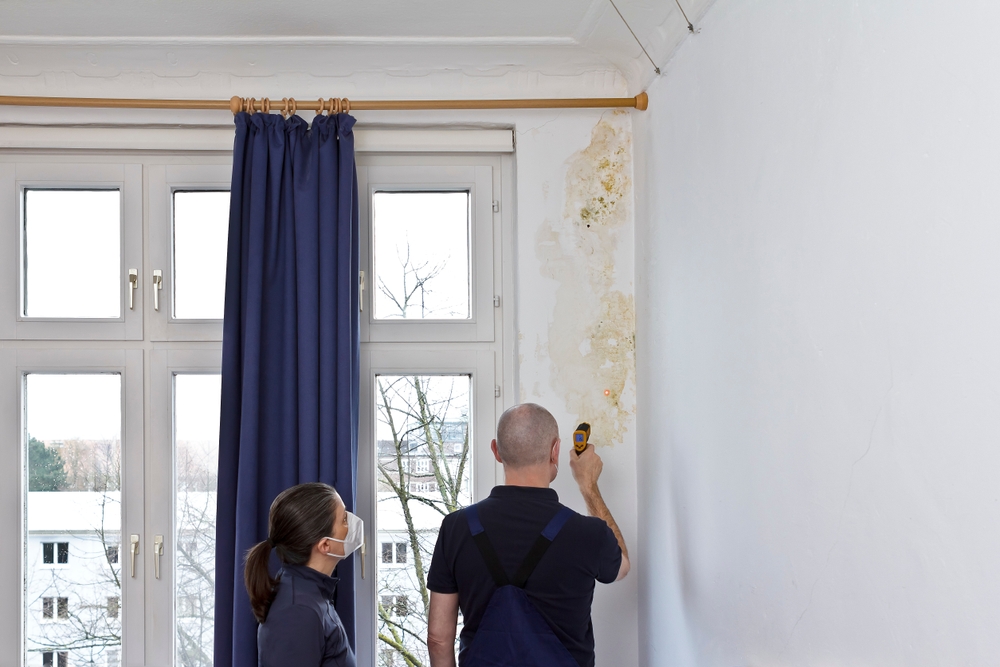Blog
How to Get Rid of Damp in Bedrooms

While it may seem more logical that kitchens and bathrooms are more prone to damp, it may be surprising for some homeowners to learn that their bedrooms are equally vulnerable to being damaged by damp. Your kitchen and bathroom are rooms in which the production of steam through cooking and bathing are everyday occurrences. As a result, it is an accepted everyday practice to ensure that these rooms have proper ventilation.
However, bedrooms tend to be separated from these vapour generating rooms, so to walk in one day to see your wallpaper peeling away from the wall can be distressing.
What to Do if You Find Damp in the Corner of a Bedroom Ceiling
Discovering damp in the corner of your bedroom ceiling can be a worrying time for property owners. The immediate concern is that there may be significant damage to the roof, or to the external brickwork, which risks being an expensive job to repair. There is a possibility that this could be penetrating damp, in which case source needs to be located the appropriate remedial work needs to be carried out.
However, it is worth doublechecking with a reliable and trustworthy expert. The causes of damp in an upstairs bedroom are not necessarily down to structural issues. Understanding the movement of vapour within the interior of a property could be the cause. If this is the case, then dealing with how to get rid of damp in bedrooms suddenly becomes much more affordable.
What Are the Causes of Damp in an Upstairs Bedroom?
Bedrooms typically exist in low pressure zones within a home. This means that, compared to areas like bathrooms and kitchens where moisture is being generated, bedrooms tend to have lower air pressure. Because moisture is an airborne substance, it naturally moves from areas of higher pressure to those with lower pressure, putting bedrooms in the frontline of excessive moisture.
If this is the case, then it Is great news for the homeowner. This means that there are no structural issues that are affecting damp coming into the property from external sources, which in turn means that no expensive, inconvenient remedial structural work will be needed.
Additionally, bedrooms often contain bulky furniture that is placed against external walls. This hampers the ability of central heating systems to warm these surfaces, creating cooler spots that attract and condense moisture from the air.
Homeowners also need to be aware of fluctuating internal temperatures. When central heating is on and the house is warm, the air can hold more airborne moisture without it turning into condensation. When the heating goes off and the internal temperature drops, the colder air can no longer hold the same amount of moisture which, with the right conditions, turns into condensation. This is why bedrooms can feel particularly cold and damp if you’re returning from a winter holiday.
What to Do to Prevent Damp in Bedrooms
Instead of having to call in the experts, instead you simply need to perform a few simple tasks as outlined below to ensure that the air in your bedrooms can better circulate, and the temperature is more consistent.
First and foremost, make sure you adequately ventilate any bedrooms which are prone to moisture. The installation of a humidistat extractor fan to the bathrooms and kitchens will help to regulate levels.
Avoid placing furniture in front of radiators to ensure a better flow of heat throughout the room. Check the outside of walls for any evidence of penetrating damp and assure furniture is not placed against cold walls. Make sure there are gaps between any furniture and the wall internally to allow for movement of air and heat.
If you do go away during the winter, keep the heating on low to avoid fluctuations in room temperature throughout the house. Try and identify and rectify any persistent cold spots to prevent them from becoming excessively cold and attracting moisture.
What to Do With Damp Walls
Assuming you have carried out all the actions as described above, you need to wait until the walls have properly dried out before you can do anything further to repair any damage caused by the damp.
Once completely dry, you can remove any excess black mould that may have gathered. You can inexpensively purchase mould and mildew removers from most supermarkets or DIY stores, though hot soapy water works just as well. Be careful as you are wiping down the surface of the wall as you don’t want to be dispersing the mould spores any further.
Once the walls are clean and dry, you might want to apply a special anti-mould paint. This paint prevents mould from coming back.
If you are in any doubt about the provenance of your damp, please do not hesitate to contact Garratt’s, and we will be pleased to check it out for you.
Recent
-
18 Mar 2024
How to Get Rid of Damp in Bedrooms
While it may seem more logical that kitchens and bathrooms are more prone to damp, it may be surprising for…
-
13 Nov 2023
Benefits of Tanking Your Basement
While basements have been a staple of home construction in multiple countries, they are still a relatively new concept in…
-
13 Nov 2023
Taking Action on Fixing Damp
Damp is a widespread problem in properties across the UK; however, this doesn’t stop the fact that it’s a serious…







